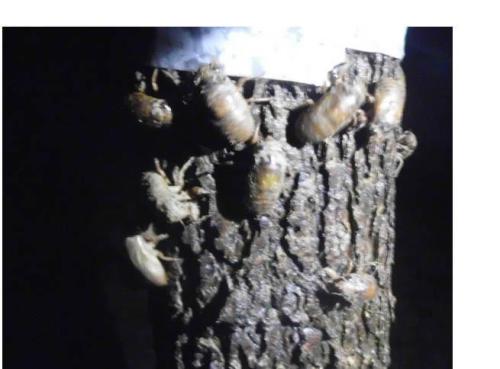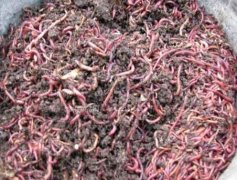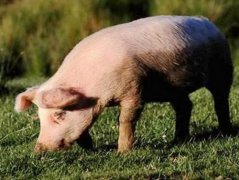Golden cicada culture method: how to collect golden cicada egg branches and how to hatch golden cicada egg branches?
Do you have a pretty golden cicada? How do golden cicadas hatch? Well, the first thing we need to do is to get the provenance, and then talk about the problem of hatching. let's take a look at it.

Get the provenance and collect the eggs. Choose a place with dense trees and many cicadas, and use a long pole with a high shearing at the top to cut off the thin, withered branches that have been spawned and killed by cicadas. Cicada eggs are those whose one side is flat and dry and the surface is incomplete, and the subcutaneous xylem is inlaid with a large number of milky white long oval eggs. Leave 10-15 cm egg-free branches in the lower part of the spawning nest. 50 branches are tied up into a small bundle and put into a plastic bag. There should be holes in plastic bags. Adults are collected, and mature larvae are collected at 18-24:00. The harvester caught it with a flashlight at the base of the trunk of the tree. After harvest, it is put into a yarn cage to feather and lay eggs. Shrubby host plants can be planted in spawning cages and some fruit trees can be planted. You can also catch adults on trees.
The burial of eggs will concentrate the egg-bearing branches collected from the wild or in the provenance site to hatch indoors. Spread 5-10 cm fine dry sand at the bottom of a wooden box or plastic box that is 70 cm long, 40 cm wide and 20 cm high, put the egg branches vertically or horizontally on them, and constantly spray spray water with a small sprayer to keep the air at a high humidity. During this period, it was found that nymphs were formed, that is, the branches with eggs were buried in the farm. The burial time is from September to October (2-year eggs), and the eggs can not be buried until June-July of the following year. The planting position is 1 meter away from the base of the trunk under the host plant tree, digging narrow trenches 30-50 cm deep, such as ring, square, triangular, parallel or radial, so as to dig or capture.
After planting, the cover soil is compacted, and the ditch shape and depth are recorded. After hatching, cicadas began to grow in June, when they weighed 1 gram, the whole body and eyes were milky white; the next year, the body weight was 3 grams, the whole body pigment deepened, and the eyes were pink; in the third year, the nymph matured, weighing 4-4.5 grams, with an average of 210 per kilogram, with brown body color and dark gray eyes. Fourth, there are many natural enemies of nymphs and adults, such as toads, snakes, rats, hedgehogs, sparrows and other birds; Beauveria bassiana, Beauveria bassiana and Cordyceps (cicadas) and other microorganisms. Floods and pesticides and fertilizers do great harm to nymphs or adults. The most important seasons are the egg stage of the tree, the occurrence period of cicada ants, and the unearthed period of mature nymphs. The natural enemies in the egg stage and the occurrence period of "cicada ants" are mainly ants and red Toona sinensis. The control measures are to soak the branches with eggs in a solution diluted 100 times by strong chlorine, or to treat the soil with dichlorvos, strong chlorine and other pesticides.
- Prev

Earthworm breeding techniques: earthworm farming methods how to manage earthworms in the field in winter?
Nowadays, the economic benefits of earthworm farming are also very high, which makes many people raise earthworms. Do you know the key points of earthworm management? 1. Daily management should be more careful, including checking temperature and humidity, spawning and hatching, feeding, enemy infestation and abnormalities
- Next

How to prevent and cure pig and poultry disease: what is heterophilia? How to prevent and cure porcine heterophilia
When you raise a pig, did you find that it will get a very strange disease, which is all heterophobia? what kind of disease is this and how to prevent and cure it? Pigs are addicted to things they don't normally eat. Heterophobia is a disease caused by metabolic disorders and nutritional deficiencies.
Related
- On the eggshell is a badge full of pride. British Poultry Egg Market and Consumer observation
- British study: 72% of Britons are willing to buy native eggs raised by insects
- Guidelines for friendly egg production revised the increase of space in chicken sheds can not be forced to change feathers and lay eggs.
- Risk of delay in customs clearance Australia suspends lobster exports to China
- Pig semen-the Vector of virus Transmission (4)
- Pig semen-the Vector of virus Transmission (3)
- Five common causes of difficult control of classical swine fever in clinic and their countermeasures
- Foot-and-mouth disease is the most effective way to prevent it!
- PED is the number one killer of piglets and has to be guarded against in autumn and winter.
- What is "yellow fat pig"? Have you ever heard the pig collector talk about "yellow fat pig"?

